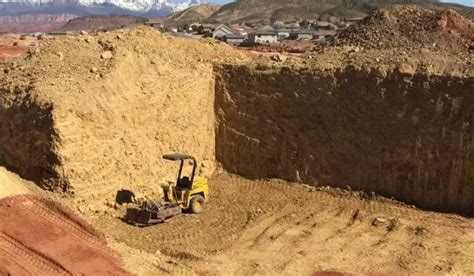over excavation and compaction Over-excavation is the removal of unsuitable soils below plan excavation level when building on native soil. Learn how over-excavation is measured, paid for, and backfilled with suitable soils or geotechnical textiles. Micro & mini digger hire in Burton on Trent, up to 8 tons is what we at UKD Diggers Ltd specialise in. That, combined with our reputation for excellent, expert, service and site ready diggers .
0 · what is over excavation
1 · trench excavation contract details
2 · overexcavation of soil
3 · overexcavation and replacement
4 · over excavation in construction
5 · expansive soil overexcavation
UK's Leading Digger Bucket Manufacturer . We are a leading global supplier of Excavator .
Over excavation is the process of digging beyond the planned depth of the .

5 ton mini excavator models
Over-excavation is the removal of unsuitable soils below plan excavation level when building on native soil. Learn how over-excavation is measured, paid for, and backfilled with suitable soils or geotechnical textiles. Over excavation is the process of digging beyond the planned depth of the foundation or trench. It’s an essential task in the construction process aimed at ensuring the stability and durability of the structure. Overexcavation is the removal of expansive soil to reduce heave under a foundation or subgrade. Replacement is the filling of the excavated area with nonexpansive or treated soil. Learn the advantages, disadvantages, and design considerations of this method.

what is over excavation
Learn about the earthwork operations and requirements for roadway construction projects in California. Find out how to prepare, inspect, and pay for excavation, backfill, embankment, compaction, and other earthwork activities.Over-excavation refers to the practice of removing more soil than is necessary from a construction site, often extending beyond the required depth and width for a foundation. This technique can be employed for various reasons, such as ensuring proper drainage, addressing unstable soil conditions, or allowing for larger footings.
Compaction must take place during a fill operation to increase the density of the soil material being placed. Another common breakdown in excavation work is bulk excavation and trench excavation. Swell and shrinkage are two important, and often misunderstood, terms. Learn about 11 soil stabilization methods, such as aggregates, geotechnical textiles, compaction, and cement. Compare their advantages and disadvantages for different engineering purposes and projects.Learn about soil types, compaction methods and techniques, and how to achieve optimal density and moisture content. Find out which sand will get really hard when compacting: well-graded sand with little or no fines.Learn how to increase subgrade support for pavement strength and performance by compaction, stabilization, over-excavation or base course. Find out how to check subgrade density, elevation and primecoat for HMA pavements.
trench excavation contract details
overexcavation of soil
Over-excavations involve the replacement of existing soil with "structural fill," which is defined as soil of a specific consistency that is moisture-conditioned (water is added) and compacted in layers to a specific hardness (density). Over-excavations can be effective in the right conditions.

Over-excavation is the removal of unsuitable soils below plan excavation level when building on native soil. Learn how over-excavation is measured, paid for, and backfilled with suitable soils or geotechnical textiles.
Over excavation is the process of digging beyond the planned depth of the foundation or trench. It’s an essential task in the construction process aimed at ensuring the stability and durability of the structure.
Overexcavation is the removal of expansive soil to reduce heave under a foundation or subgrade. Replacement is the filling of the excavated area with nonexpansive or treated soil. Learn the advantages, disadvantages, and design considerations of this method.Learn about the earthwork operations and requirements for roadway construction projects in California. Find out how to prepare, inspect, and pay for excavation, backfill, embankment, compaction, and other earthwork activities.Over-excavation refers to the practice of removing more soil than is necessary from a construction site, often extending beyond the required depth and width for a foundation. This technique can be employed for various reasons, such as ensuring proper drainage, addressing unstable soil conditions, or allowing for larger footings.Compaction must take place during a fill operation to increase the density of the soil material being placed. Another common breakdown in excavation work is bulk excavation and trench excavation. Swell and shrinkage are two important, and often misunderstood, terms.
Learn about 11 soil stabilization methods, such as aggregates, geotechnical textiles, compaction, and cement. Compare their advantages and disadvantages for different engineering purposes and projects.Learn about soil types, compaction methods and techniques, and how to achieve optimal density and moisture content. Find out which sand will get really hard when compacting: well-graded sand with little or no fines.
Learn how to increase subgrade support for pavement strength and performance by compaction, stabilization, over-excavation or base course. Find out how to check subgrade density, elevation and primecoat for HMA pavements.
overexcavation and replacement
over excavation in construction
TFM Hire is an established plant hire company that offers a wide range of equipment and tools. Pop in for a chat or give us a call!
over excavation and compaction|expansive soil overexcavation